
Table of contents:
- Author Bailey Albertson [email protected].
- Public 2023-12-17 12:53.
- Last modified 2025-06-01 07:32.
Composition of cat food: how to analyze the list of ingredients yourself

There are so many brands and products on the market of complete cat food that it is impossible to quickly make a choice without specialized knowledge. In addition, pet owners find it more difficult to decide due to clever marketing moves and aggressive advertising of some brands. Meanwhile, a deficiency of nutrients and some ingredients can cause side effects and deterioration in health. For this reason, it is important to be able to independently analyze the composition before purchasing a product.
Content
- 1 What a cat needs
- 2 What should be in cat food
- 3 What should not be in cat food
- 4 Potentially hazardous ingredients
-
5 Features of the choice of feed
- 5.1 Table: Analysis of feed by class
- 5.2 Ingredient positions
- 5.3 Ash content
- 5.4 Digestibility
- 5.5 Offal
-
6 Composition of special feed
- 6.1 Kitten food
- 6.2 Food for senior cats
- 6.3 Food for neutered cats
- 6.4 Prophylactic and medicinal feed
- 7 The opinion of veterinarians
What a cat needs
Cats are obligate predators, meaning that their diet consists primarily of meat. Pets need animal proteins and amino acids more than carbohydrates. They need connections not only to obtain energy, but also to ensure the correct operation of all organs and systems.
In their natural environment, animals hunt small game: rodents, birds, etc. From the stomachs of the victims cats get a small amount of cereals, vegetables and fruits. Products in the digestive tract of birds and rodents are subjected to primary treatment with enzymes. In this form, they are relatively well absorbed by the feline body, but most of the nutrients still leave the intestines unchanged. The resulting plant food helps to meet the daily need for those trace elements that are not found in meat.

When eating natural products, 75-80% of the menu is occupied by meat, 10-15% is allocated to offal and 10% is left for fermented milk products and vegetables
Like all living things, a cat needs water, so it is advisable to give it not only dry, but also wet food. The granular product contains practically no liquid, which can become an additional risk factor if the drinking regime is not observed. Dehydration can lead to problems with the digestive tract, kidneys, cardiovascular system and other organs. In some cases, wet food is the only acceptable option. For example, my cat has a very sensitive digestion: after the pellets, she gets blood in her stool. After the examination, the veterinarian said that this is an individual feature, in general, the animal is healthy, but it is better to switch to pouches and pates. The hard granules damage the delicate inner lining, which can later provoke inflammation and infection. The cat does not have such a reaction to wet food.
What should be in cat food
In high-quality cat food, meat should be present first of all. The presence of several varieties is encouraged if the pet does not have problems with food intolerances. The use of different types of animal products allows you to provide the feline body with all the necessary amino acids and trace elements. It is good if the manufacturer indicated that the composition includes fresh meat. This means that it has not undergone preliminary heat treatment and long-term storage. However, it should be borne in mind that the share of fresh meat also contains a large amount of liquid (about 70-80%), which in the case of low-quality dry food with fillers distorts the overall picture.

Fish contains a lot of unsaturated fatty acids, so its presence in the composition is a significant advantage, but for castrated animals it is better to choose a different food: a high concentration of minerals provokes the development of ICD
Dehydrated meat is almost as good as fresh meat, and in some cases it is even better. If the dried ingredient is the number one ingredient in a cereal feed, it allows the consumer to understand that the diet contains sufficient amino acids. Of course, grain-free food is preferable, but owners do not always have the opportunity to give their pets such products. For example, my friend's cat, when transferring from economy class to holistics, developed nausea and vomiting.
Whole carcasses without offal ("chicken", "turkey", "duck") are also acceptable ingredients. Internal organs are removed during the preparation of raw materials, only meat and skin remain. Sometimes, along with carcasses, a small proportion of cartilage, bones and other impurities gets into the feed, but in the case of high-quality products, this is even useful: a small amount of offal is included in the natural menu and helps to meet the daily needs for trace elements. When it comes to budget rations, things can be worse. Unscrupulous producers may treat carcasses less carefully or add additives, so the quality of the ingredient depends on the manufacturer of the feed.

Beef tripe is a healthy by-product: it contains probiotics and enzymes, therefore it improves digestion
Vegetables, fruits, berries, herbs, plant extracts, etc., can be included in the feed as a vitamin-mineral complex. In small amounts, they help to obtain trace elements that are better absorbed in their natural form. Additionally, plant components contain fiber. It stimulates the movement of feces, improves peristalsis and cleanses the mucous membranes of the gastrointestinal tract from rotting food debris. Many of these supplements also contribute to the normal development of microflora, creating an optimal environment for the growth of beneficial bacteria. This prevents food from rotting and increases resistance to infection.

Some cat foods (Pronature, 1st Choice) contain ginger: it improves immunity and has a tonic effect
Preventive feed additives are encouraged. With the right choice of the complex, nutrition will prevent the appearance of age-related problems and the development of certain pathologies. For example, berries and many fruits normalize the acidity of urine, thereby preventing the formation of calculi in the urinary system. Cartilage is a natural source of glucosamine and chondroitin, which are essential for maintaining a healthy musculoskeletal system. Molluscs, crab shells and some other analogues are capable of replacing this ingredient. Beans in small amounts can improve digestion.
Any feed must contain preservatives. In the case of quality products, rosemary and a mixture of tocopherols are used for their safe preservation. The combination of these two ingredients prevents early spoilage and is not harmful to health.

The broth is a natural flavoring agent: the liquid is sprayed onto the granules at the end of the feed preparation
Manufacturers can incorporate natural additives to enhance palatability and aroma appeal. For example, chicken liver. Such additives are in most cases safe, although if possible, it is advisable to familiarize yourself with a detailed analysis of the composition. Increasing the attractiveness of food is necessary if the pet has health problems that are accompanied by a deterioration in appetite. It will also help to "negotiate" with fastidious animals. The presence of flavoring and aromatic additives facilitates the transition to a new feed.
What should not be in cat food
In a good feed, the proportion of cereals should be minimized, up to the complete absence of grains in the composition. This component is practically not absorbed by cats. Its main task is to provide the animal's body with carbohydrates and fiber. Vegetables and fruits, which are more nutritious, do better with this. Cereals are often used as a cheap filler. The most dangerous of these are corn and wheat. They often cause allergies. The presence of barley and oats is more acceptable, however, their proportion should also be minimal.

Sometimes producers replace cereals with beans or potatoes, but in reality this does not change much: cats need meat more than vegetable ingredients.
Any generic names are not encouraged. This applies to both animal and plant components. The presence of vague concepts in the list of ingredients indicates either poor quality of raw materials (i.e. the manufacturer is hiding something), or instability of the composition. In the latter case, the manufacturer retains the ability to use different components in each batch. This does not meet the biological needs of cats: in the wild, the chemical composition of the game remains almost the same. Frequent menu changes contribute to digestive upset.
Some of the most common unwanted components are:
- Bird. It can be either chicken or turkey. The former is, of course, more likely. The definition of "poultry" does not characterize an ingredient, since the manufacturer does not specify what exactly the feed contains: meat, internal organs, skin, or something else. In most cases, the name "poultry" hides cheap by-products with no nutritional value.
- Meat. An even more vague component than "bird". This includes chicken, beef, pork and even fish with equal success. In most cases, the manufacturer uses low quality components. If an allergy occurs, it will be difficult for the pet owner to understand what caused the problem.
- Fish. The disadvantages are the same as the above ingredients.
- Animal fat. Of course, it is commendable that the manufacturer does not use only vegetable oils, but the source of the component must be indicated.
- Cereals. Any varieties can be hidden under this name. Most often, manufacturers try to hide the presence of corn and wheat in the composition using a common name.
- Vegetables. The ingredient is often cited by unscrupulous companies. This marketing ploy is designed for inexperienced buyers: many people will think that the presence of vegetables in the composition is a huge plus, because they contain useful substances. In reality, manufacturers usually do not use whole luxury products, but separate parts. For example, partitions. In addition, predators do not absorb nutrients from vegetables well, so there is no need for large amounts of plant ingredients. Specific varieties are preferred.
- By-products. The component can be both useful and harmful, depending on the composition of the mixture. If a manufacturer doesn't specify a specific type of ingredient, chances are they have something to hide.
- Processing products. In other words, industrial waste. For the sake of economy, those components are added to the feed that remained after the manufacture of other products. In the case of ingredients of animal origin, this can be the so-called pink mucus. It remains after cutting the carcasses. If these are products of processing of plant components, then the manufacturer surely means the peel, peeling, etc.
The presence of vitamins, minerals and amino acids in dry food in a pure form is not encouraged. Ideally, the diet should be as close as possible to the natural menu, not only in chemical composition, but also in content. Individual supplements are less readily absorbed by animals than the same nutrients from whole ingredients. In addition, the presence of amino acids indicates a lack of meat in the feed. In the natural environment of cats, the same taurine is obtained from animal products.
In general, there is nothing dangerous in the above ingredients, but there is also little useful in them. This becomes the reason for the development of pathologies when feeding with economy and premium products. Due to the deficiency of amino acids, minerals and vitamins, systemic diseases progress slowly and without symptoms. As a result, in most cases, organ dysfunction becomes known too late. I personally know about three such cases: in 2 cats, ICD was found, in one there was a decomposition of the pancreas. One of them ate Royal Canin. It's a shame that such a popular company with high-priced products is capitalizing on pet health through aggressive marketing.
Potentially hazardous ingredients
Unlike the previous group, these components are capable of provoking the rapid development of diseases or the occurrence of exacerbations in the presence of chronic pathologies. First of all, these are various dyes, preservatives and unnamed flavoring and aromatic additives. If their type is not specified, it is highly likely that the manufacturer is using not the safest components. If there are specific names, it is advisable to check the ingredient against the base. Most of these additives are difficult to identify by name without special knowledge in the field of chemistry.

The dyes in the composition are of interest exclusively to buyers; for cats, the shade of the granules does not affect the attractiveness of the product
Sugar and caramel are often used in wet food to obtain a light brown color and soften chunks. Eating such ready-made diets causes watery eyes, itching and other allergy symptoms. Cats are carnivores, so sugar is poorly absorbed. Some of it is deposited in the form of glycogen, the rest enters the bloodstream along with toxic metabolic products. This becomes the cause of an uncharacteristic reaction. I had to deal with this personally, when my cat's eyes began to leak because of the budget food. Out of inexperience, I gave her Whiskas pouches as a treat. After the appearance of red flaky spots on the skin, I stopped doing it. After a few weeks, the symptoms disappeared.

When choosing wet food, you need to pay attention to the consistency and color of the meat, as well as the texture of the sauce: the presence of jelly and unnatural identical pink pieces without fibers is undesirable
The presence of cellulose in the feed is not encouraged. Some manufacturers add it to cleanse their teeth, but this is not necessary because cats do not chew the pellets. Cellulose can cleanse the walls of the digestive tract, but coarse abrasive particles can just as well cause sensitization and inflammation. With prolonged use of food with cellulose in cats, the development of gastrointestinal diseases is observed.
It is advisable to avoid wet feed, which contains additional thickeners, gelling components and analogs. In some cases, it is impossible to avoid their use, therefore their presence is due to the peculiarities of the production technology, but these substances are not included in the natural diet of predators. There are no third-party thickeners in high-quality feed.
Features of the choice of feed
There are many quality criteria, but the main ones can be distinguished.
Table: feed analysis according to class
| Class | What is included | Benefits | disadvantages | Popular representatives |
| Economy |
|
Relatively low price: 1 kg of feed costs about 100 rubles. |
|
|
| Premium |
|
|
In general, premium-class feeds hardly differ from budget products: the share of meat components in them is just as small, but there are many common names and plant ingredients. Digestibility is slightly higher, but the animal still does not receive enough substances, which leads to a deterioration in health. |
|
| Super premium |
|
|
The key disadvantage is the high cost, but many popular premium feeds cost the same: about 500-700 rubles. per 1 kg |
|
| Holistic |
|
Holistic-class food meets the biological needs of cats and allows you to get all the necessary nutrients | High price |
|
Ingredient positions
The first thing to look at is the positions of the components in the composition. In the beginning, there must certainly be meat or whole carcasses. Cereals, vegetables or by-products should not take the lead. Since we are talking about cat food, meat should be the basis of the diet.

Orijen dry food is a prime example of quality ready-made rations: the first 5-10 positions in the list of ingredients are consistently occupied by animal products
Ideally, there should be several meat components in the first places. The presence of cereals in the feed is permissible only if they are located at the end of the list. The presence of several varieties of grains or their components (gluten, extract, flour, etc.) close to the beginning of the composition indicates the predominance of plant proteins over animals, which is unacceptable for cats. Many manufacturers in this way try to mislead buyers: they indicate wheat, corn, wheat gluten, and flour in the list of ingredients, and leave fresh meat in the first place, which is taken into account along with water. As a result, the share of easily digestible animal products is less than 10%.
The presence of a percentage of the main components in the composition is desirable. This allows you to get at least a rough idea of the quality of the feed. Typically, manufacturers of holistic and super premium diets indicate the percentage of ingredients. Companies engaged in the manufacture of budget feeds hide information.
Ash content
During the preparation of dry food during heat treatment, some organic components are destroyed. Inorganic substances, which are minerals, do not burn. It is this remaining part that is usually called ash. This is not a harmful additive, cheap filler or byproduct, but substances that the feline body needs to function properly. It used to be thought that ash increased the risk of developing KSD, but in the 1980s, scientists proved that this was not the case.

Most grain-free foods are high in ash content (8-9%), so cats are less willing to eat them.
The ash content depends on the raw materials used. For example, processing the pulp leaves less inorganic matter than burning bones or muscles. For this reason, a high ash content in cheap feed may indicate the use of low-quality ingredients. A low concentration of minerals is also dangerous, since the animal does not receive enough nutrients from such food. In addition, the ash content affects the palatability of the feed: if there is too much inorganic residue, the pet will refuse food. For example, my cat turns away from many products, the proportion of ash in which exceeds 8%.
The optimal indicator is considered to be 6-7%. In fact, many holistic grade foods contain 9-10.5% ash. This is due to the use of preventive supplements and herbal raw materials instead of minerals. For castrated cats, it is advisable to purchase food with a low ash content in order to normalize the acidity of urine, but it is better to navigate by the concentration of magnesium, calcium and phosphorus.
Digestibility
The digestibility of feed should be maximum: the more nutrients the pet receives from the diet, the better. The optimal level is considered to be 25%. The digestibility can be indirectly determined by the volume of animal feces. The less the feline body receives substances from the feed, the more feces are excreted, i.e. the ingredients simply pass through the digestive tract in transit.
Offal
By-products themselves are a controversial component. On the one hand, they can contain useful substances. On the other hand, manufacturers of budget feed often use cheap offal as a filler.

Lamb lung contains a lot of cartilaginous tissue, therefore it helps to prevent the development of pathologies of the musculoskeletal system
Quality diets include liver, lungs, kidneys, and sometimes hearts, cartilage, and chicken heads. Such by-products provide the animal's body with glucosamine, chondroitin, amino acids, energy, minerals, vitamins, etc. This is true only if the total share of such ingredients does not exceed 15%. If the manufacturer uses quality components, he indicates their type and does not hide the composition of the mixture.
Cheap offal can actually be anything. For example, a cancerous tumor, the bladder along with its contents, intestines, horns, bones, beaks, etc. Such additives have zero nutritional value and may even pose a danger to animals. If the manufacturer uses low-quality by-products, he usually indicates the general names: "by-products", "processed products", etc.
Composition of special feed
Very different requirements are imposed on specialized feeds, therefore, their composition may differ from the standard one.
Food for kittens
Kittens should get more vitamins, unsaturated fatty acids, minerals and calories as their body is actively developing. The presence of colostrum or other additives that strengthen the immune system is desirable. Fish oil provides the kitten's body with fatty acids and vitamins E, so its presence is preferable.

Most often, the composition of kitten food is of the highest quality among the entire line, so it can indirectly evaluate the brand's products as a whole.
Food for senior cats
Food for older cats is often less high in calories, because at an older age, animals become less active, which can provoke obesity. The diet includes preventive supplements to maintain joint health.
Food for neutered cats
Feeds for sterilized animals are low in calories. Due to the disappearance of the reproductive instinct in cats and cats, sexual hunting ceases, which takes a lot of energy. This increases the risk of obesity. It is desirable to have prophylactic additives (berries or fruits) in the composition to normalize the level of urine acidity. This prevents the development of ICD. Sterilized cat food may contain fewer minerals to reduce the risk of calculus formation.
Preventive and medicinal feed
The compositional characteristics differ depending on the type of feed. Consider the main types of specialized diets:
- To remove wool. The composition includes more sources of fiber (vegetables and fruits) for the timely capture and removal of hairs from the digestive tract.
- For the treatment of kidney disease. Reduced the proportion of phosphorus. Supplements (aloe, flax seeds, etc.) can be added to protect the mucous membranes of the gastrointestinal tract: with uremic syndrome, there is a high risk of damage.
- For the treatment of pathologies of the lower urinary tract. Reduced the proportion of minerals. Added ingredients to normalize urine acidity.
- To maintain liver health. The proportion of fats and proteins is reduced to reduce the load on the diseased organ and prevent the development of encephalopathy.
-
Hypoallergenic. The food is distinguished by its laconic composition. Rare meats may be present.

Hypoallergenic 1st Choice food When choosing a hypoallergenic food, you should carefully study the composition: often unscrupulous manufacturers do not add meat to the diet at all
- Diabetic. Wheat and corn are replaced with slow carbohydrate sources such as barley, oats, and beans.
- For the treatment of gastrointestinal diseases. If your cat is constipated, feed it with a high fiber concentration. In case of hypersensitivity, gastritis, colitis and other pathologies, the proportion of coarse fibers is reduced and pro- and prebiotics are added.
- To improve the condition of the coat and skin. Contains fish and fish oil: they contain unsaturated acids and vitamin E, which contribute to moisturizing and shine.
The opinion of veterinarians
The health of the cat depends on the composition of the food. We strongly recommend not to save on the animal's menu, as this will lead to the development of pathologies. It is advisable to give preference to super-premium and holistic-class products, however, when choosing them, you need to remain vigilant: you should avoid feeds with an excess of cereals in the composition.
Recommended:
The Better To Feed A Kitten: Natural Food, Ready-made Dry And Wet Food, What Foods You Can And Cannot, Feeding Rules, How Many Times A Day
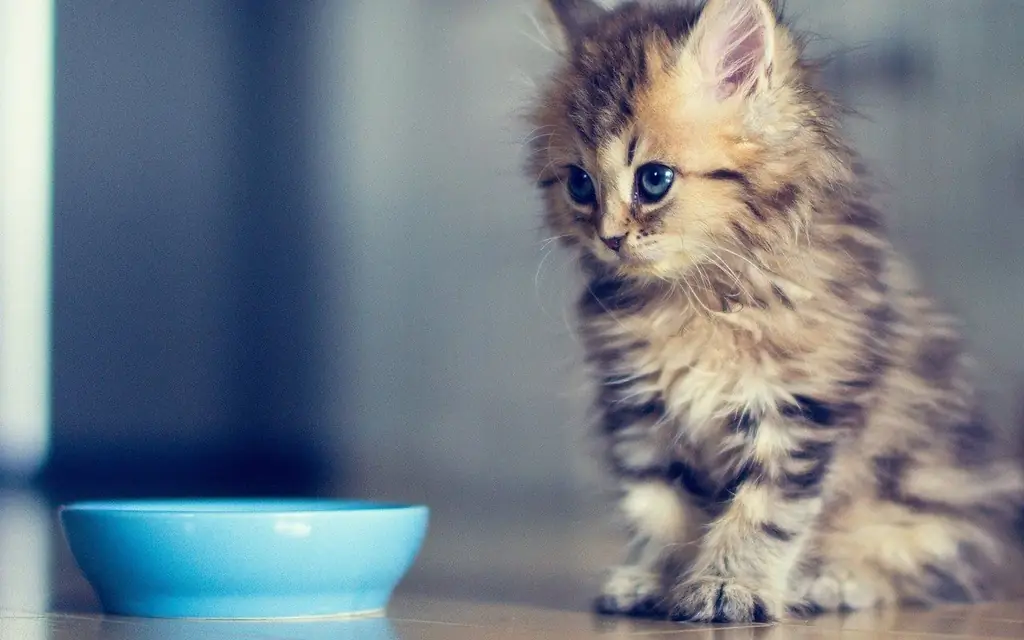
Kitten feeding rules. Veterinarian recommendations. Features for every age. Prohibited and permitted products, prepared feed. Feed reviews
"Whiskas" Food For Adult Cats And Kittens: Review, Composition, Range, Pros And Cons, Reviews Of Veterinarians And Owners, Comparison With "Friskas"
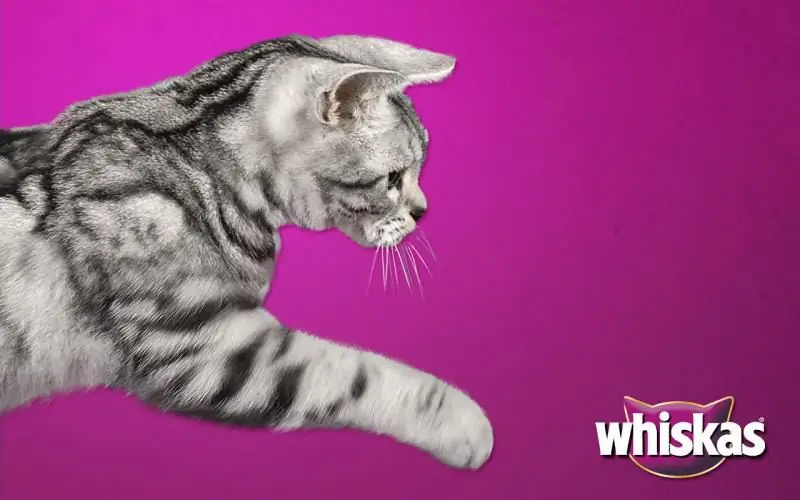
What the Whiskas food contains. Can I give it to animals. Is it worth changing the feed "Whiskas" to "Friskis"
Classes Of Food For Adult Cats And Kittens: Description Of Species And Categories, Classification By Consistency, Dry And Wet, Age And More
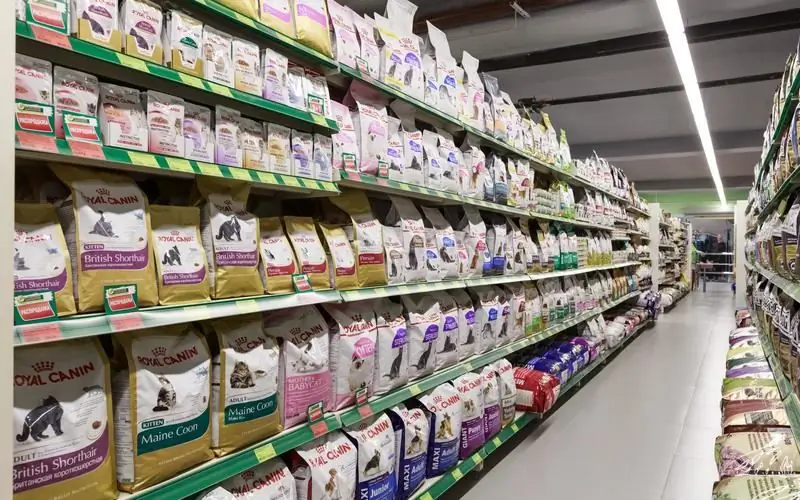
What are the ready-made cat food. How do they differ from each other. What foods should not be given to cats
What Food To Feed The Maine Coon (adult Cat And Kitten): Dry And Wet Food, Recommendations, Permitted And Prohibited Foods
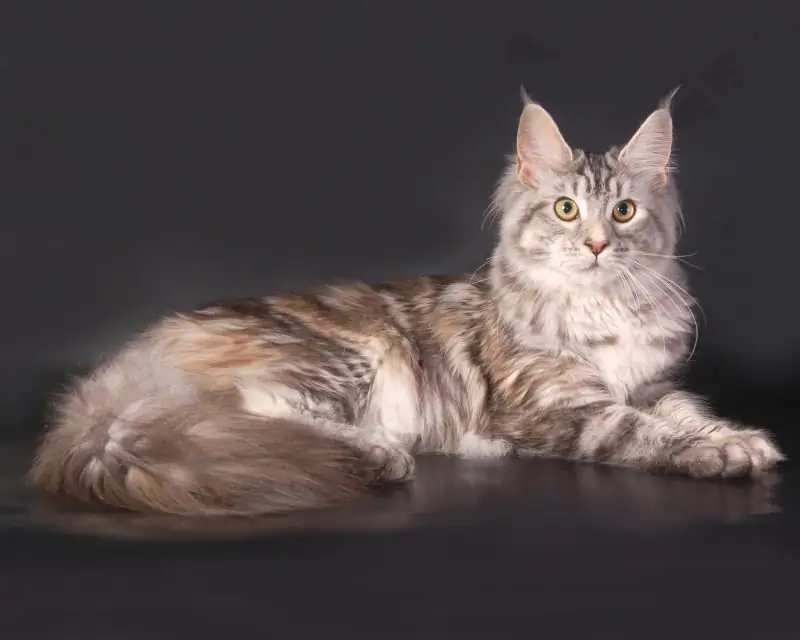
How to feed a kitten and an adult Maine Coon cat. What products are allowed to be given to animals. How to choose dry food for Maine Coon
Containers And Bowls For Dry And Wet Cat Food: Varieties, How To Choose, What To Look For, Where To Place And How To Care
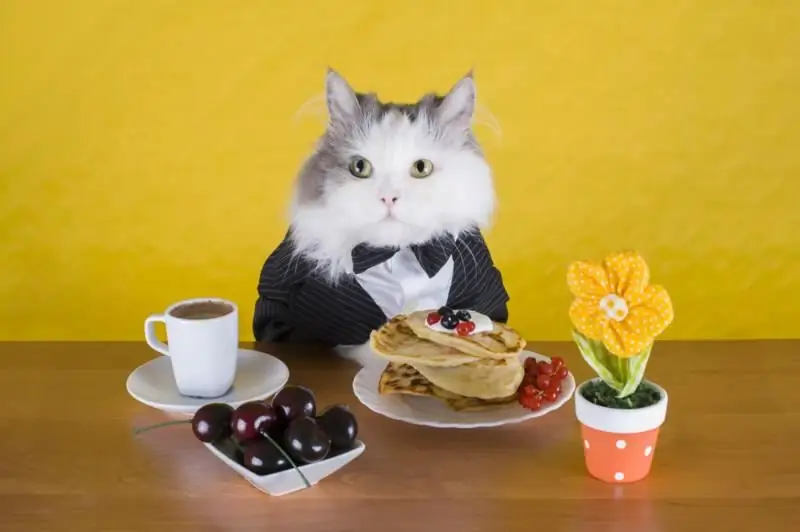
What kind of dishes does the cat need; types of bowls and auxiliary items for feeding a cat, how best to choose a bowl, how to care for a cat's dishes
